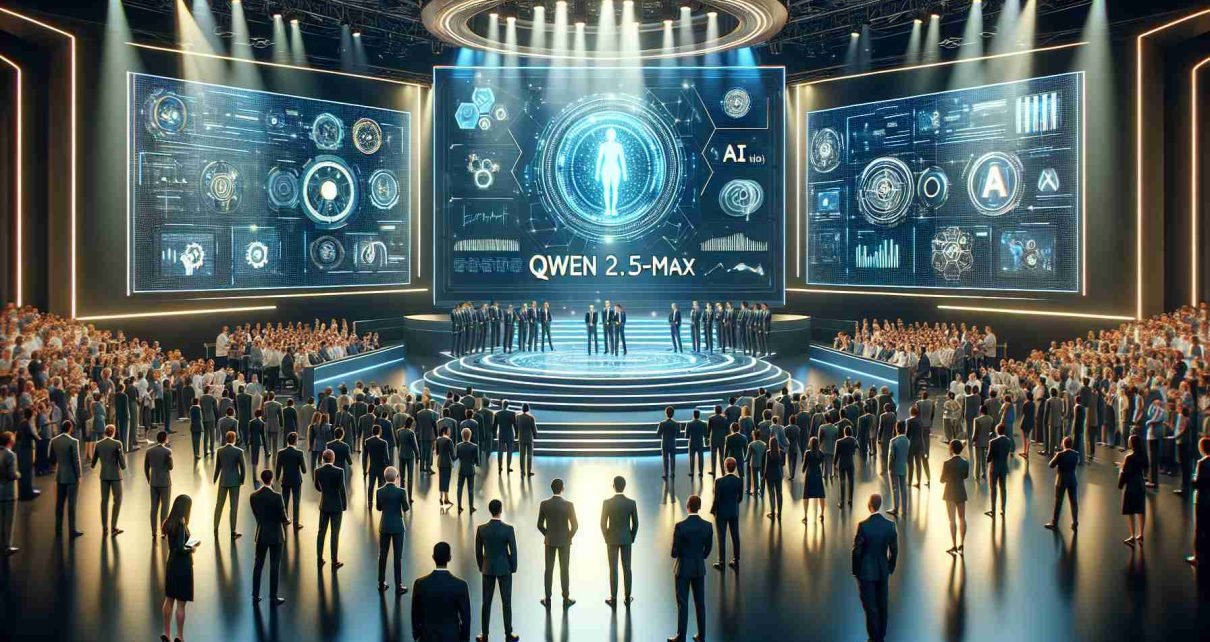Introduction to DeepSeek and ChatGPT
In the rapidly evolving landscape of artificial intelligence, both DeepSeek and ChatGPT represent significant advancements in their respective domains. DeepSeek is an innovative AI-powered search engine designed to provide users with in-depth data analysis and contextual understanding of information. Its primary purpose revolves around searching for, organizing, and presenting information in a way that enhances comprehension and accessibility. By utilizing machine learning and natural language processing, DeepSeek aims to create a more intuitive interface, allowing users to delve deeper into complex subject matters.
Conversely, ChatGPT, developed by OpenAI, stands out as a conversational AI model focused on generating text-based interactions with users. This generative pre-trained transformer is engineered to understand prompts, carry on conversations, and provide informative responses across a wide range of topics. ChatGPT serves a different purpose from DeepSeek; rather than seeking and analyzing information like a search engine, it interacts with users in a way that mimics human dialogue, making it particularly appealing for customer support, tutoring, and entertainment.
While both technologies leverage advanced machine learning techniques, their functionalities cater to different target audiences. DeepSeek is primarily aimed at researchers, students, and professionals who require thorough analyses and structured data. In contrast, ChatGPT is tailored more towards casual users, businesses, and developers who benefit from a conversational style interface for quick answers and suggestions. Understanding these foundational aspects of DeepSeek and ChatGPT is crucial as we delve deeper into their comparative analysis, focusing on their strengths, limitations, and distinct applications in the world of artificial intelligence.
Core Functionalities of DeepSeek
DeepSeek offers a range of functionalities that distinguish it from traditional AI solutions, particularly in the realm of managing data and enhancing user interactions. One of its core strengths lies in its advanced data management capabilities, which prioritize efficiency and accuracy. DeepSeek employs a proprietary algorithm that allows for real-time analysis of large datasets, enabling users to derive insights quickly and effectively. This capability proves essential for businesses and individuals needing to make informed decisions promptly.
Furthermore, user interaction is central to DeepSeek’s design philosophy. The platform utilizes an intuitive interface that simplifies the process of navigating complex data sets. Users can easily input queries or commands, and the system responds by delivering relevant information in a user-friendly format. This focus on usability contrasts sharply with traditional AI systems, which often require extensive training and adaptation on the part of the user.
Another noteworthy feature is DeepSeek’s adaptive problem-solving strategy. Utilizing machine learning, the platform learns from user interactions and continuously refines its responses. This means that over time, DeepSeek becomes increasingly adept at understanding the specific needs of its users, tailoring solutions that enhance both efficiency and relevance. By incorporating user feedback into its operations, DeepSeek epitomizes a responsive AI that evolves alongside its user base.
Moreover, DeepSeek is designed with versatility in mind, enabling it to serve a diverse range of industries, from healthcare to finance. Its ability to process unstructured data, coupled with its capacity for nuanced interpretation, sets it apart from conventional AI tools. By offering comprehensive data analysis, accessible interaction interfaces, and adaptive learning capabilities, DeepSeek establishes itself as a leader in the realm of intelligent data management solutions.
Core Functionalities of ChatGPT
ChatGPT is a sophisticated language model developed by OpenAI, distinguished by its remarkable natural language processing (NLP) capabilities. Its architecture is built upon the principles of machine learning, enabling it to understand and generate human-like text responses. Central to its functionality is the ability to analyze user inputs contextually, allowing for more relevant and coherent replies. This deep contextual understanding enhances its conversational skills, making interactions engaging and insightful.
The model is trained on diverse datasets, which helps it respond to a wide array of topics and inquiries. This extensive training equips ChatGPT to recognize patterns in language and produce responses that mimic human speech, contributing to a seamless conversational experience. Whether answering questions, making recommendations, or providing explanations, ChatGPT demonstrates versatility in handling various types of queries.
Moreover, ChatGPT finds utility across numerous domains, showcasing its adaptability. In educational contexts, it can facilitate learning by answering questions and providing explanations on complex subjects. In customer service, its ability to engage in meaningful conversations helps streamline support processes and enhance user satisfaction. Additionally, it serves as a creative tool, assisting writers in generating ideas, drafting content, and even conducting brainstorming sessions.
Furthermore, its use of fine-tuning enables it to cater to specific applications and industries. Organizations can customize ChatGPT to meet their particular needs, thereby enhancing its effectiveness in targeted scenarios. The capacity for personalization and contextualization makes it an invaluable asset across sectors. Overall, ChatGPT’s core functionalities underscore its role as a pioneering conversational agent in the digital landscape, fostering authentic interactions and meeting a broad spectrum of application requirements.
Technological Framework: DeepSeek vs ChatGPT
The advancements in artificial intelligence have been accelerated by the development of sophisticated technological frameworks underpinning systems like DeepSeek and ChatGPT. These frameworks leverage complex architectures, algorithms, and machine learning models that define their operation and effectiveness. Understanding these differences is vital in appreciating each model’s unique capabilities and potential applications.
DeepSeek is designed with a focus on semantic search and intelligent retrieval of information. Its architecture is based on a layered neural network that emphasizes understanding the context of inquiries rather than merely matching keywords. This framework utilizes advanced techniques such as vector embeddings and advanced natural language processing (NLP), allowing it to interpret nuances in language. By employing attention mechanisms, DeepSeek can prioritize relevant information, ensuring users receive tailored responses that address their specific needs.
Conversely, ChatGPT operates on the principles of transformer architecture, characterized by its ability to manage vast datasets and generate human-like text. It utilizes a pre-training and fine-tuning approach, where the model is first trained on diverse internet text before being fine-tuned on specific tasks. This two-step methodology enhances its language comprehension, enabling it to engage in conversations that mimic human interaction. The output generated by ChatGPT is a product of its vast training on a wide variety of topics, which allows it to provide informed answers across different contexts.
Both systems leverage machine learning models that are continuously improving through user interactions and feedback. However, while DeepSeek concentrates predominantly on precision in information retrieval, ChatGPT excels in conversational engagement. These distinctions in technological frameworks highlight the strengths and limitations of each model, shedding light on their respective utilities in various applications within the realm of artificial intelligence.
User Experience: A Comparison
The user experience associated with DeepSeek and ChatGPT provides a crucial lens through which to evaluate these two platforms. Both services feature distinct interfaces that cater to varying user preferences and needs. DeepSeek is designed with a focus on simplicity and clarity, offering a clean and intuitive interface that facilitates navigation. Users often report positive experiences regarding the ease of finding necessary features and information. In contrast, ChatGPT provides a more dynamic and versatile interface, which many users find engaging. However, the complexity of options can occasionally overwhelm newcomers, leading to a steeper learning curve.
Accessibility is another key aspect of user experience that differentiates the two platforms. DeepSeek prioritizes broad accessibility across devices, ensuring that users can engage with the platform seamlessly on desktops, tablets, and mobile devices. User feedback indicates that this flexibility greatly enhances the user experience, allowing for uninterrupted access regardless of location. ChatGPT, while also accessible on multiple devices, has received criticism regarding loading times and responsiveness, especially during peak usage. This occasionally hampers the overall effectiveness and satisfaction reported by its user base.
Usability studies have shed light on specific features that impact user experience in both platforms. DeepSeek’s onboarding process has been highlighted for its straightforward tutorials and customer support, effectively minimizing user frustration. Conversely, although ChatGPT offers extensive features for advanced users, the extensive options can sometimes alienate less experienced individuals. User feedback suggests that while experienced users appreciate the advanced functionalities, novices often require more guidance to navigate the complex interface effectively.
In summary, while both platforms provide unique user experiences, their approaches to interface design, accessibility, and usability create distinct impressions among users. It is essential to consider these differences when choosing between DeepSeek and ChatGPT, as each platform addresses user needs in varying capacities.
Use Cases and Applications
Both DeepSeek and ChatGPT serve as powerful tools in various industries, each offering unique functionalities that cater to specific needs. In customer service, companies are increasingly leveraging AI chatbots to improve efficiency and customer satisfaction. While ChatGPT excels with its conversational capabilities and natural language understanding, DeepSeek’s ability to analyze vast datasets allows for a more tailored approach in addressing customer inquiries. For instance, a business using DeepSeek can integrate it to analyze customer feedback from multiple sources, providing insights that directly inform service improvements.
In content creation, the two platforms also demonstrate their distinct strengths. ChatGPT is particularly effective for generating creative content, such as articles, poetry, or marketing materials. Its style and tone can be adjusted to resonate with different audiences, making it an appealing option for writers. On the other hand, DeepSeek specializes in research-driven content production, making it an ideal solution for academic and technical writing. By turning complex data into understandable language, DeepSeek can assist researchers by synthesizing information and generating contextual insights to deepen understanding within specific fields.
Moreover, in the realm of research, both models have valuable applications. ChatGPT supports researchers by summarizing articles and providing quick answers to inquiries, saving time during literature reviews. Conversely, DeepSeek’s strength lies in its capability to perform advanced data mining, allowing researchers to easily uncover trends and patterns from extensive datasets. This functionality is particularly beneficial in fields like market analysis, where informed decision-making relies heavily on data interpretable by AI.
In conclusion, while both DeepSeek and ChatGPT offer considerable advantages in various sectors, their optimal applications depend on specific user needs. By understanding these differences, organizations can effectively harness the strengths of each AI model to enhance their operations and outcomes.
Strengths and Limitations
DeepSeek and ChatGPT are both innovative AI tools designed to engage in natural language processing, yet they each exhibit distinct strengths and limitations that cater to different user needs. Understanding these aspects can help potential users determine which tool best fits their requirements.
One of the primary strengths of DeepSeek lies in its advanced search capabilities. This tool excels in synthesizing information from various sources, allowing users to retrieve comprehensive and relevant results for complex queries. Users often praise DeepSeek for its accuracy in providing data-driven insights, making it particularly useful in research-oriented tasks. Furthermore, the user interface is noted for being intuitive, ensuring that individuals with varying technical backgrounds can navigate it with ease.
On the other hand, ChatGPT shines in conversational abilities. Its capacity for generating human-like responses makes it effective for dialogue-based applications, enhancing user interactions in various contexts such as customer support and personal assistance. Users frequently highlight ChatGPT’s adaptability, as it can generate contextually appropriate content across a multitude of topics, making it an excellent choice for creative writing and engagement.
However, limitations exist for both platforms. DeepSeek may struggle with nuanced conversational contexts, often providing overly concise answers that lack the depth of discussion inherent to human dialogue. Such limitations can hinder user experience in scenarios requiring elaborate feedback or interactive conversations. In contrast, while ChatGPT offers an impressive repertoire of language generation, it may produce responses that, at times, lack factual accuracy or may generate inappropriate content if not carefully monitored.
In summary, both DeepSeek and ChatGPT present unique strengths that cater to distinct applications, alongside limitations that users should consider when selecting an AI tool. Understanding these factors will enable users to leverage each tool’s capabilities while navigating potential drawbacks effectively.
Future Directions and Developments
The landscape of artificial intelligence (AI) is rapidly evolving, with significant advancements anticipated for both DeepSeek and ChatGPT in the coming years. As these technologies progress, it becomes imperative to explore future directions that may enhance their functionalities and user interactions. One prominent area of development lies in the integration of more sophisticated machine learning algorithms. This evolution could lead to more accurate, context-aware responses, ensuring that both DeepSeek and ChatGPT provide a higher level of service tailored to user preferences.
Apart from algorithm enhancements, the ongoing trend of incorporating multimodal capabilities highlights another key focus. Users are increasingly expecting tools that can seamlessly process and interpret various forms of data, including text, images, and audio. Future iterations of both DeepSeek and ChatGPT may incorporate such functionalities, allowing for enriched interactions and a more holistic understanding of user queries. This advancement will not only increase efficiency but also broaden the application scope of these AI tools across diverse sectors.
The demand for enhanced personalization is another critical development area. As users seek solutions that resonate with their specific needs, future models may leverage advanced user profiling techniques to deliver tailored content. By analyzing previous interactions and preferences, DeepSeek and ChatGPT could provide a more immersive and relevant user experience, fostering greater engagement and satisfaction.
Emerging trends in AI, such as ethical considerations and transparency in AI decision-making, are destined to shape the future of these platforms. Ensuring that both DeepSeek and ChatGPT adhere to ethical standards will not only enhance their credibility but also cultivate user trust. As we look toward the future, the evolution of these AI models will be pivotal in addressing the changing landscape of user requirements and expectations.
Conclusion: Making an Informed Choice
In the landscape of artificial intelligence, choosing the right tool for your needs is crucial. This comparison between DeepSeek and ChatGPT has highlighted several important aspects that users should consider. Both platforms offer unique benefits, tailored to different use cases, and understanding these differences will aid in making an informed decision.
DeepSeek is notable for its robust capabilities in retrieving and analyzing complex datasets, making it an ideal choice for businesses and researchers who need precise information and in-depth analysis. Its focus on data accuracy and context-awareness sets it apart, as it provides users with powerful insights that are essential for strategic decision-making. Additionally, DeepSeek’s adaptability in various applications, from academic research to enterprise solutions, makes it a versatile option.
Conversely, ChatGPT excels in natural language processing and conversational AI. It stands out for its ability to engage users in interactive dialogues, proving to be beneficial for customer support, educational purposes, and personal assistance. The platform’s design prioritizes user interaction and ease of use, catering to those who seek a more dynamic engagement with artificial intelligence. ChatGPT’s extensive training on diverse language data allows it to produce contextually relevant responses, which can enhance user satisfaction in conversational settings.
Ultimately, the decision between DeepSeek and ChatGPT should be guided by the specific requirements and contexts of the user. Organizations focusing on data-centric tasks may find greater utility in DeepSeek, while those seeking conversational interfaces may prefer ChatGPT. It is advisable to assess individual goals, the level of complexity required, and the type of interactions anticipated before making a choice. By understanding the strengths of each platform, users can select the one that aligns best with their objectives, ensuring they derive the maximum benefit from their chosen AI technology.






